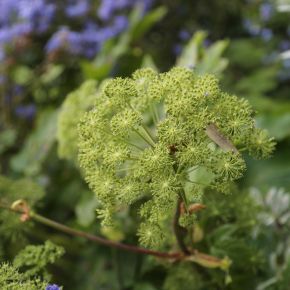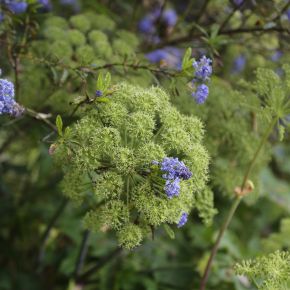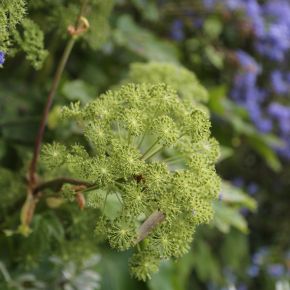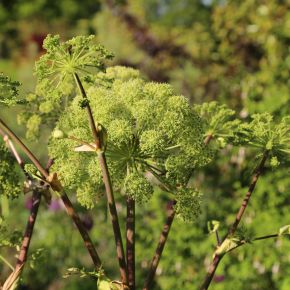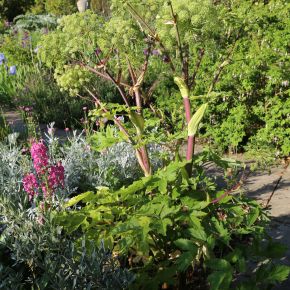Angelica archangelica
(Archangel)
Family - Apiaceae
Category - Perennial, biennial
Origin - Europe, Asia
Year of Introduction - 1300's
Season of Interest - Spring, Summer, Autumn
Hardiness - H6
Height - 2m or more
Width - 1.2m
Location - The Cool Garden
Description: A large, herbaceous Perennial with a bushy, upright habit. Bright mid-green leaves are pinnate (but can be bi- or tri-pinnate) with ovate to lanceolate leaflets. The individual leaves can reach to 60cm in length and are held on tall, thick and hollow stems. The leaves can be used as a sweetener and the stems candied. Very small, pale green flowers are held in large compound umbels. The umbels are held atop the upright stems and are produced from late spring into early summer. The flowers are very attractive to pollinating insects. The plant can be monocarpic and die after flowering, but can survive if deadheaded. Angelica archangelica is famous through botanical history for its medicinal and culinary value. Legend states that Mattheus Sylvaticus, a physician in the 1300's, was lead to the plant and its medicinal value by the archangel, hence the common name. The roots were believed to protect against the plague and other infectious diseases.
Additional common names - Norwegian Angelica, Holy Ghost
Flower:
Very small pale green flowers are held in large compound umbels. The flowerheads are held on tall, upright stems and are produced in May and June.
Flower colour: Green
Flower shape: Small flowers in compound umbels
Flowering time: May, June
Foliage:
Bright mid-green leaves are pinnate (sometimes bi- or tri-pinnate) with ovate to lanceolate leaflets with finely toothed margins. Each leaf can reach to 60cm in length. The leaves are held in opposite pairs on the thick, hollow stems.
Foliage Senescence: Deciduous
Foliage Shape: Pinnate with ovate to lanceolate leaflets
Propagation:
Seed.
Cultivation:
Best in full sun to partial shade in fertile soil that is well drained.
